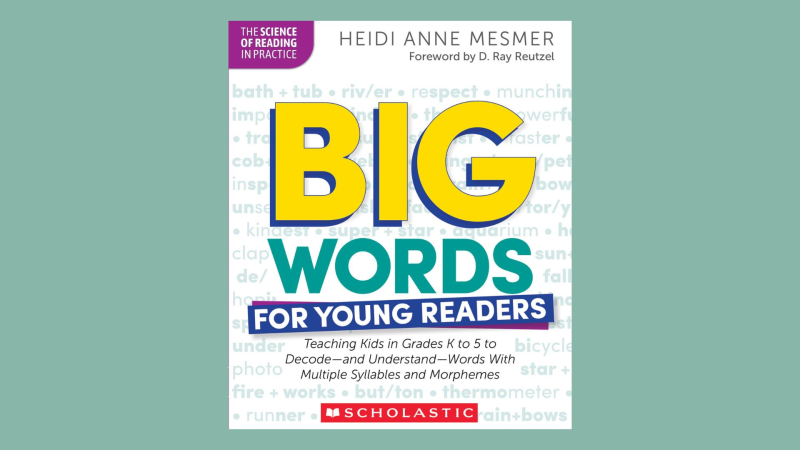This post is part of an ongoing series exploring new findings from the Scholastic Teacher & Principal School Report: 2nd Edition. This national survey of public school Pre-K–12 educators, conducted by YouGov, focuses on critical issues affecting schools and districts across the country.
This year has been remarkable in so many ways, presenting previously unimaginable challenges to educators, families, and students everywhere. As reported by Education Week, at the peak of school closures due to the coronavirus pandemic, at least 55.1 million students in U.S. public and private schools were affected. This rapid shift to remote learning during the school year, combined with the closure of libraries, summer camps, bookstores, and more during the summer, led to dramatic changes in how educators deliver instruction, how students learn, and how community partners and schools function to meet the varying needs of families.
Between July 23 and August 4, 2020, amid the spread of the COVID-19 pandemic, Scholastic conducted an online re-contact survey of 860 public school Pre-K–12 educators who had participated in the Teacher & Principal School Report: 2nd Edition national survey in winter 2020. This follow-up survey aimed to gather educators’ evolving perspectives on their experiences, and the experiences of their students, during the period of school disruption caused by the pandemic, and how they felt going into the 2020–2021 academic year.
Below is a summary of the research findings, revealing the availability of essential services during school closures, the role of independent reading at home, resource needs for successful remote learning, the importance of meeting students’ social-emotional needs, and educators’ views on their profession.
Programs & Services Provided During COVID-19
With schools shut down in many areas of the country, social distancing measures in place, and mandatory stay-at-home orders in different states, access to support systems outside of school was even more crucial during school closures. When asked what programs and services were provided to support students and families, educators’ responses reveal shifts from winter 2020, pre-pandemic.
The focus of programs and services during the pandemic was to increase access to essential items—notably food and the necessary technology for learning. Nearly all educators report that during the school closures, food was provided to students outside of the school day (99%), up from 58% over the winter. Access to technology or the internet outside of school (85%, up from 48%), providing books for home libraries (54%, up from 44%), and mental health services for teachers (47%, up from 41%) also saw notable increases.
During this time, educators also report that the availability of other support systems decreased; in particular:
- early childhood programs (64%, down from 78% over the winter)
- mental health services for students (69%, down from 80%)
- SEL programs (64%, down from 71%)
- healthcare services for students (51%, down from 58%)
Even among programs that show an increase in reported availability, educators say that more is still needed to support students and families. They point to a need for more services that provide access to technology and the internet outside of school (63%), books for home libraries (44%), and food (31%).
The role of community partners also shifted as a result of COVID-19 and the accompanying restrictions. According to educators, community partners during this time were more likely to provide assistance with access to technology and the internet outside of school (59%, up from 31% in the winter) and books for home use (37%, up from 23%). They were less likely to provide students with healthcare (34%, down from 55%) and mental health services (39%, down from 54%).
Encouraging Reading at Home During COVID-19
Teachers and principals have long known the power of reading to not only help students build their foundational skills such as phonics, phonemic awareness, vocabulary, fluency, and comprehension—but also to provide comfort, joy, and a sense of routine during difficult times.
While schools were closed due to the coronavirus, nearly two-thirds of teachers (64%), indicated that they encouraged or assigned reading more often than during a typical year, demonstrating the importance of reading for learning and emotional growth while students and teachers were disconnected. About half (55%) of teachers reported that their students’ families understood the importance of reading to support achievement, but teachers did not have the typical line of sight into the day-to-day lives of their students, as they would during a standard school year. Specifically, just 14% of teachers believe independent reading happened more often during the COVID school disruption, while 44% of teachers say they increased their efforts compared to pre-COVID to encourage students to read independently. More than one-quarter (26%) reported not knowing the degree to which this happened.
Similarly, just 5% of teachers believe read-aloud time happened more often during the COVID school disruption, despite 27% of teachers reporting that they more often encouraged their students and their families to participate in read-aloud time at home. Fully half of teachers did not have a line of sight into the degree to which this actually occurred in homes.
Preparing for an Unprecedented Back-to-School
As they look ahead to the 2020–2021 academic year, teachers and principals everywhere are grappling with fears for their own safety and the safety of their students, in addition to the challenges of understanding new local and state regulations for reopening and technological logistics for remote learning. “I think this is a very difficult time for everyone, and school districts are trying to do what's best for the students,” explains an elementary school teacher from Tennessee. "This is a teaching experience for all."
Given the potential for a double “COVID slide” and “summer slide” in academic skills while schools have been closed, 78% of educators say they expect to have fewer students starting the school year ready for grade-level work than in years past.
Educators predict that many of the needs they identified pre-COVID will be even greater for students and families in the 2020–2021 academic year. The spring experience with distance learning brought to light a greater need for access to the internet and other learning resources outside of school (84%), to have families involved in student learning (73%), and to create strong connections with students (67%).
Implementing Distance Learning
The need for digital programs has grown exponentially since the start of the COVID-19 pandemic. With approximately 73% of the 100 largest school districts choosing remote learning only as their back-to-school instructional model, as seen in Education Week, this trend will certainly continue. Last winter, just 39% of literacy teachers surveyed in the Teacher & Principal School Report: 2nd Edition mentioned digital programs for student learning as a needed resource for providing literacy instruction to students at various skill levels.
When asked in summer 2020 what resources they would need to support literacy instruction in distance learning, teachers focused on digital resources and flexibility. More than seven in 10 literacy teachers say they want programs that blend teacher instruction with digital resources (78%), digital texts that can be used for whole or small group instruction (74%), and programs that combine multiple types of formats and activities (72%).
The key things teachers need to know to support their students during distance learning include physical logistics such as internet connectivity (80%), how involved parents/caregivers can be (76%) in distance learning, and access to devices (66%).
Yet despite the changing needs of both teachers and students, teachers do not feel they’re being heard in their school or district’s planning for distance learning, or in planning for the 2020–21 academic year overall—only 35% and 33% agree that teacher voices and views are being listened to, respectively.
Funding Priorities Shift to Reflect Distance Learning Needs
Teachers were asked to rank their top funding priorities to support student learning. While teacher compensation, staff to reduce student-to-teacher ratio, and social-emotional learning remain top priorities, funding priorities during COVID-19 reflect the increased need for digital programs and wrap-around services for students.
Teachers’ top five funding priorities in winter 2020:
- 60% overall teacher compensation
- 52% additional high-quality staff to reduce student-to-teacher ratio
- 47% social-emotional initiatives and programs
- 38% high-quality instructional materials and textbooks (net)
- 38% academic intervention initiatives and programs
Teachers’ top five funding priorities in summer 2020:
- 56% overall teacher compensation
- 51% technology devices and digital resources in school (up from 24% in winter)
- 50% additional high-quality staff to reduce student-to-teacher ratio
- 40% social-emotional initiatives and programs
- 38% student access to wrap-around services, including healthcare, mental health care, etc.
Recognizing Students’ Social-Emotional Needs
The isolation and uncertainty caused by COVID-19 this year has taken its toll on everyone, including teachers and principals who find themselves grappling with how to best support their school communities on top of their own mental and physical well-being. The pandemic is shining a spotlight on things educators have long known to be true: schools provide social-emotional stability for students (68%), and the importance of close student-teacher relationships (72%), and partnering with families for student success (70%).
Educators share that their top COVID-19-related concern is the impact on students’ social-emotional wellness (86%). They’re also concerned about the impact of COVID-19 on students’ academic achievement (83%), and the physical health of students and their families (81%). This impact on students’ social-emotional wellness is crucial; 99% of educators agree that for students to reach their highest academic potential, their social-emotional needs must be met. But, 86% of educators say they need help meeting those needs.
This need for SEL support is even more evident; only 11% of educators report that their schools were extremely or very effective in supporting students’ social-emotional needs during the COVID-19 school disruption. Additionally, only 12% say that schools are extremely or very prepared to do so in the 2020–21 academic year. In the words of one high school teacher from Tennessee, “I think we were ineffective not for a lack of trying, but simply because teachers didn't have tools or resources to contact students and because teachers didn't have measures in place to reach students.”
An elementary school teacher from Ohio shares, “This year is going to be challenging because we might be remote to start the school year off, whereas last spring we at least had established relationships with our students, and they had confidence in us. It will be difficult to establish a strong sense of community when we are six feet apart, and also when we are remote establishing a student-teacher connection.”
Teachers’ Outlook on the Profession
In spite of the many challenges they’ve faced this year, nearly all teachers (97%) continue to feel their careers are challenging, yet rewarding. At the same time, overall teacher job satisfaction is down about 10% between the winter and summer months, with only 51% of teachers saying they are extremely or very satisfied with their jobs, down from 56% in the winter. As one principal from Georgia explains, “Educators are facing the most difficult start to a school year ever, and we need all stakeholders to provide support in a positive and encouraging way. Educators need to be shown grace, support, and love.”
Keep Reading: Don’t miss the other posts from this series! Click the links below to discover additional research from the Scholastic Teacher & Principal School Report.
- Reading Serves as a Critical Bridge to Stem Learning Loss by Dr. Karen Burke
- Discovering a Social-Emotional Lifeline Through Reading by Pam Allyn
- Professional Learning Trends for 2020 and Beyond by Dr. Carol Chanter
- What Teachers Want in Children’s Books by Deimosa Webber-Bey
Methodology: To see the full Scholastic Teacher & Principal School Report: 2nd Edition methodology, click here.





